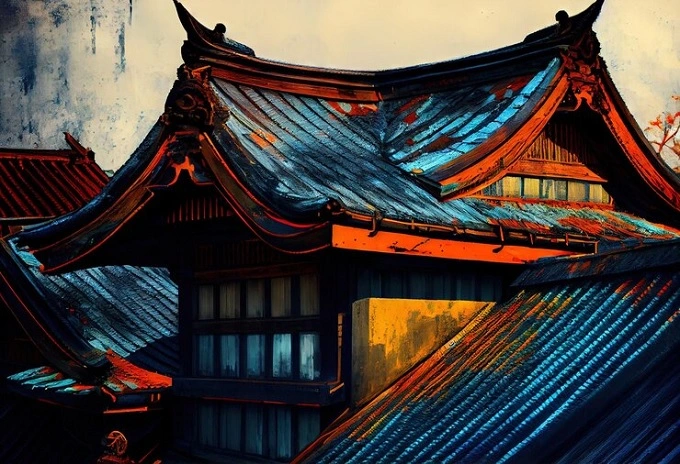The trend of painting roofs blue in China has garnered significant attention in recent years. Though initially perplexing to outsiders, this phenomenon has both aesthetic and functional motivations behind it. As blue roofs proliferate across China, their impacts on urban landscapes, building temperatures, and local communities merit deeper investigation. This article will explore the history, science, and controversies around China Painting Roofs Blue.
Historical Context
Most roofs in China have historically been gray. Traditional buildings had roofs made of wooden planks, bamboo, or thatch, which weathered to gray over time. In modern times, concrete tile and galvanized steel became the most common roofing materials, both also gray.
The shift towards blue began in the 2000s, as China experienced massive construction booms. Local officials in various cities started initiatives to paint roofs blue, though the exact origin is unclear. Some sources cite the city of Dujiangyan as the first to mandate blue roofs in 2007. Other cities including Shanghai, Xi’an, and Chongqing followed suit.
Aesthetic Perspective
Proponents argue that blue roofs are more aesthetically pleasing than gray ones. The bold color makes the rooftops a focal point against backdrops like sky or greenery. Blue is said to evoke feelings of tranquility and harmony. Architects believe blue roofs can lend visual cohesion to cityscapes, balancing modern buildings with traditional curved rooflines.
Critics counter that the monotone blue looks artificial and garish. They argue diverse roof colors better reflect a city’s vibrancy. However, blue roof supporters point out that unregulated colors can seem chaotic and clashing. Overall, the aesthetic merits of blue roofs remain subjective and tied to local architectural tastes.
Functional Perspective
Beyond aesthetics, blue roofs offer potential functional benefits. Their reflective properties are thought to help regulate building temperatures. Traditional dark roofs absorb heat and raise cooling costs during hot summers. White roofs reflect the most sunlight, but quickly look dirty. Blue is said to balance reflectivity and grime resistance. Researchers have confirmed blue roofs stay 50F cooler than black roofs in summer. However, more studies are needed on cost savings and winter heat retention.
Some also hypothesize blue roofs may deter wildfires, insects, moss, and metal corrosion. However, evidence for these effects remains anecdotal. Skeptics argue functionality is a secondary consideration, given the extra painting costs. Nonetheless, temperature regulation does seem a scientifically sound benefit of blue roofs in China hot climate.
Case Studies
Several Chinese cities showcase extensive blue roofing. In Dujiangyan, a southwestern tourist area, 99% of buildings sport blue roofs. Officials hoped to foster a tranquil image befitting the city’s Buddhist heritage. In Chongqing, a megacity of over 30 million, blue roofs help visually integrate old and new neighborhoods. Shanghai has encouraged blue roofs through roof color regulations and subsidies since 2008. Though initially controversial, blue roofs have become widely accepted as part of the city’s identity.
Controversies and Criticisms
China Painting Roofs Blue have sparked several controversies. One conspiracy theory links them to government mind control, claiming blue light from the roofs makes residents docile and obedient. Of course, no scientific evidence supports this. Some also accuse officials of cronyism, alleging they own stock in paint companies. In reality, China has a complex approval process for construction materials.
Early on, citizens complained the blue was jarring and reduced property values. But locals seem to have warmed to the trend, even as some architects remain critical. A few cities have faced challenges enforcing roof color rules. Overall though, blue roofs now seem largely accepted as an urban fixture across China.
Conclusion
China mass adoption of blue roofs has transformed cityscapes with both aesthetic purpose and functional potential. Though initially controversial, blue roofs have become ingrained in many Chinese cities’ identities. Looking ahead, blue roofs appear poised to proliferate, pending more research on their thermal efficiency and energy savings. Their visual and cultural impacts will also continue evolving. But for now, China Painting Roofs Blue revolution colors its urban landscapes in a shade uniquely its own.










